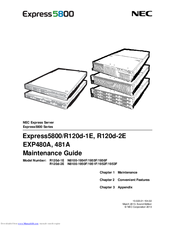NEC N8100-1950F Manuals
Manuals and User Guides for NEC N8100-1950F. We have 2 NEC N8100-1950F manuals available for free PDF download: Maintenance Manual, User Manual
Advertisement
Advertisement

